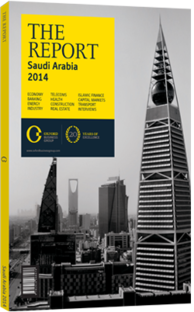Othaim: Retail
Company
Established in 1956, Abdullah Al Othaim Markets Company (Othaim) claims to be the second-largest food retailer in Saudi Arabia, with about 3.8% market share at the end of 2013. The company operates 121 locations including hypermarkets (7), supermarkets (80), wholesale stores (9) and convenience or corner stores (25). All the stores are located in Saudi Arabia, and all but four of the shops are leased. Othaim’s stores are utilitarian in terms of design and size, unlike the typical supermarkets and hypermarkets of Carrefour and Panda, its two main competitors in the country. The standard size of Othaim’s stores is relatively small compared to other chains, with supermarkets of about 2000 sq metres and hypermarkets of roughly 5000 sq metres. At the end of 2013, the company had a total sales area of 234,000 sq metres.
Othaim has one main distribution centre in Riyadh of 27,531 sq metres and six smaller facilities serving the more remote areas, supported by a transport fleet that includes trailers, trucks and containers with cold-storage facilities. There were 312 trucks at the end of 2013. The company has numerous smaller depots around the central region that provide quick access to remote untapped areas where competition is lower.
Othaim follows a low-price philosophy, targeting the low- and middle-income segments, with its product mix largely catering to local consumers. Saudis and other Arabs are the company’s typical customers. Othaim also has a customer loyalty program in place, with 526,000 active members who generate about 50% of sales, according to the company.
Food-related items constitute roughly 90% of Othaim’s sales, split into 75-80% grocery items and 10-15% fresh food, while the remaining 10% are non-food items, including electronics, white goods and appliances, textiles and toys. The company adheres to Islamic values and therefore does not sell cigarettes or magazines, among other items. Othaim aims to selectively increase its exposure to non-food items, as they generate higher margins; though demand for such products is more elastic, potentially generating higher inventory markdowns. Othaim has already launched a dozen private labels that account for roughly 5% of total sales. The company has plans to increase this contribution to 15% of total sales in the medium term.
Its 2013 revenue reached SR4.58bn ($1.22bn), up 11.6% year-on-year. Pro-forma revenue growth is driven by an increase in the number of customers, a rise in the average customer basket as a result of promotions, and price inflation. Strong non-operational income (rental and associate income) is able to more than offset eroding margins, resulting in strong net profit of SAR193m ($51m), up 12.1% year-on-year.
Development Strategy
ith about 75% of the Saudi grocery market consisting of unorganised independent stores, the key growth driver for Othaim will continue to be the move from unorganised stores to organised chains. The company believes that mergers and acquisitions within the sector should remain limited given that the main players – family-owned businesses – are reluctant to consolidate. Othaim targets expansion in smaller Saudi cities where competition is low and modern grocery retail underdeveloped. Moreover, smaller cities offer more affordable land and real estate, which is one of the key challenges Othaim faces in Saudi Arabia’s main cities.
Othaim plans to open 8-10 new stores annually, most of them supermarkets. The company’s plans for expansion should remain focused on Saudi Arabia in the short to medium term. Othaim has been growing faster than its competitors, as it operates different store formats in a number of locations in the Kingdom and relies on leasing for new stores rather than purchasing or building, which reduces the time required to open. Rental and associate income should continue to support the company’s profitability moving forward, particularly with the completion of three new malls planned over the medium term – one owned directly by Othaim and two others owned by its associate company, Al Othaim Investment and Real Estate Development.
You have reached the limit of premium articles you can view for free.
Choose from the options below to purchase print or digital editions of our Reports. You can also purchase a website subscription giving you unlimited access to all of our Reports online for 12 months.
If you have already purchased this Report or have a website subscription, please login to continue.

